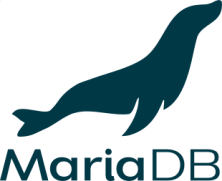How to change hostname in Alpine Linux?
 With the hostname command you can show or set/change the name of your host/server, hostname is part of the BusyBox suite.
With the hostname command you can show or set/change the name of your host/server, hostname is part of the BusyBox suite.
How to change hostname in Alpine Linux? Read More »
 With the hostname command you can show or set/change the name of your host/server, hostname is part of the BusyBox suite.
With the hostname command you can show or set/change the name of your host/server, hostname is part of the BusyBox suite.
How to change hostname in Alpine Linux? Read More »
 PHP is a general purpose scripting language that is used mainly for web development, it is pragmatic, easy to learn and use, it is constantly evolving with a wide community of developers who are in charge of enriching this popular programming language with new features, therefore it is constantly evolving.
PHP is a general purpose scripting language that is used mainly for web development, it is pragmatic, easy to learn and use, it is constantly evolving with a wide community of developers who are in charge of enriching this popular programming language with new features, therefore it is constantly evolving.
How to install PHP, PHP-FPM in Alpine Linux? Read More »
In today’s post we are going to recommend which distro use, from the RHEL family, for office environments and which one for a business environment.
Which distribution to choose from the RHEL family? Read More »
Seafile is a synchronization and file sharing solution, designed to provide high reliability, performance and productivity. With Seafile you can sync, share and collaborate between teams using different devices.
Syncronize and share files in the cloud with Seafile Read More »
Let’s Encrypt: Let’s Encrypt is a free, automated, and open certificate authority (CA), run for the public’s benefit. It is a service provided by the Internet Security Research Group (ISRG).
It provides people with the digital certificates they need to enable HTTPS (SSL / TLS) on their websites, free of charge, in the most user-friendly way possible.
How to install Let’s Encrypt SSL in Debian? Read More »

NetBSD is a UNIX-like operating system with a focus on security, simplicity, elegance and clean source code, it is highly portable and robust.
MariaDB is a RDBMS created from MySQL 5.1 source code by the original MySQL developers and designed as a direct and improved MySQL replacement. MariaDB is fast, scalable, and robust, with a rich ecosystem of storage engines, plugins, and other tools that make it versatile and flexible in different scenarios.
How to install MariaDB on NetBSD? Read More »
NGINX is a web server with excellent performance and low memory footprint. NGINX can also be used as a reverse proxy (FastCGI, Apache, uWSGI), as a proxy for mail protocols (IMAP, POP3) and as a load balancer.
In this post we will install NGINX as a FastCGI proxy then the PHP requests will be redirected to a PHP-FPM server.
How to install NGINX on NetBSD? Read More »

PHP 8.0 added new modern features such us: Union Types,Named arguments, Match expressions, Just In Time Compilation and others
Today we are going to install PHP 8.0 on NetBSD 9.1.
How to install PHP on NetBSD? Read More »
pkgin is aimed at being an apt / yum like tool for managing pkgsrc binary packages. It relies on pkg_summary(5) for installation, removal and upgrade of packages and associated dependencies, using a remote repository.
pkgin, a NetBSD package manager Read More »